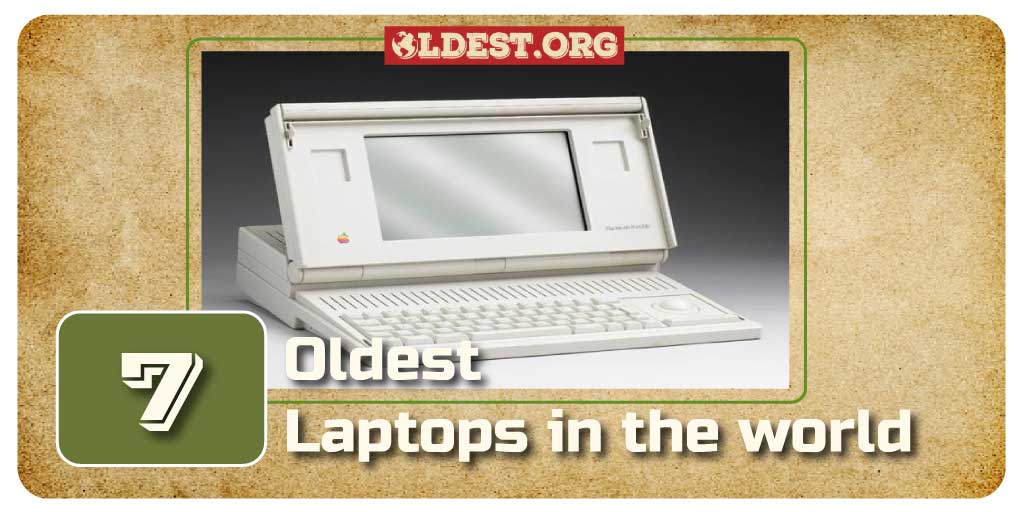This article is written from a laptop with the most modern processor. Probably you’re finding this article on your laptop as well. Laptops are now vital for our daily lives, offering convenience and productivity on the move. However, the journey to the sleek and lightweight laptops we know today began decades ago.
This article explores the 7 oldest laptops in the world that transformed portable computing.From the hefty IBM 5100 to the pioneering TRS-80 Model 100, these early laptops laid the groundwork for the laptops we use today.
7. TRS-80 Model 100 (1983)
Year Established: 1983
Origin Country: United States
Processor: Intel 80C85 @ 2.4 MHz
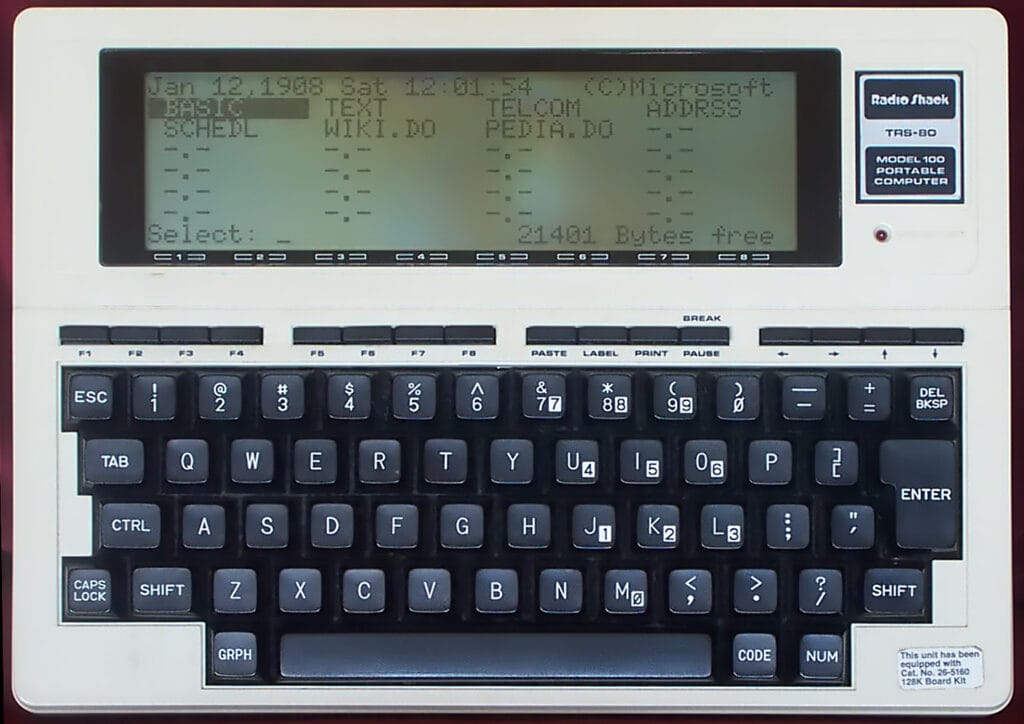
Released by Radio Shack in 1983, the TRS-80 Model 100 is a noteworthy success in the portable computer market. The TRS-80 Model 100 had a 2.4MHz CPU, up to 32KB of RAM, and came with a built-in modem and parallel printer port. It operated on four AA batteries, offering an impressive 20 hours of uptime and the capability to store memory for up to 30 days.
Did you know?
Designed by Bill Gates and Jay Suzuki, the Model 100 holds a special place in Bill Gates’ heart, as it was the last Microsoft product he personally developed, writing a significant portion of the code himself.
6. Compaq Portable (1983)
Year Established: 1983
Origin Country: United States
Processor: Intel 8088
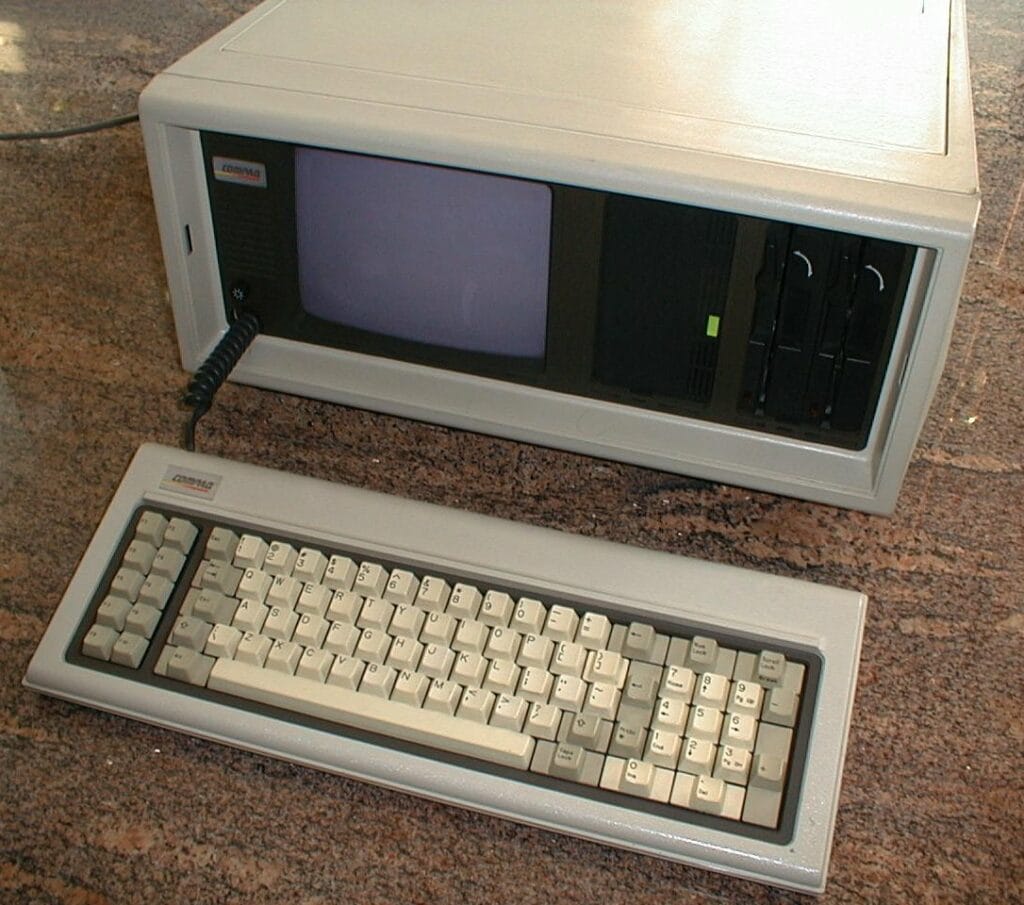
In 1983, the Compaq Portable was released as an IBM-compatible portable PC. It featured an Intel 8088 CPU, 128KB of RAM, and a choice of floppy drives or a hard disk drive. Weighing 28 pounds, it closely resembled a suitcase.
Did you know?
Compaq’s revenue soared in its early years, with the second year witnessing a staggering $329 million in revenue, setting an industry record.
5. GRiD Compass (1982)
Year Established: 1982
Origin Country: United States
Processor: Intel 8086
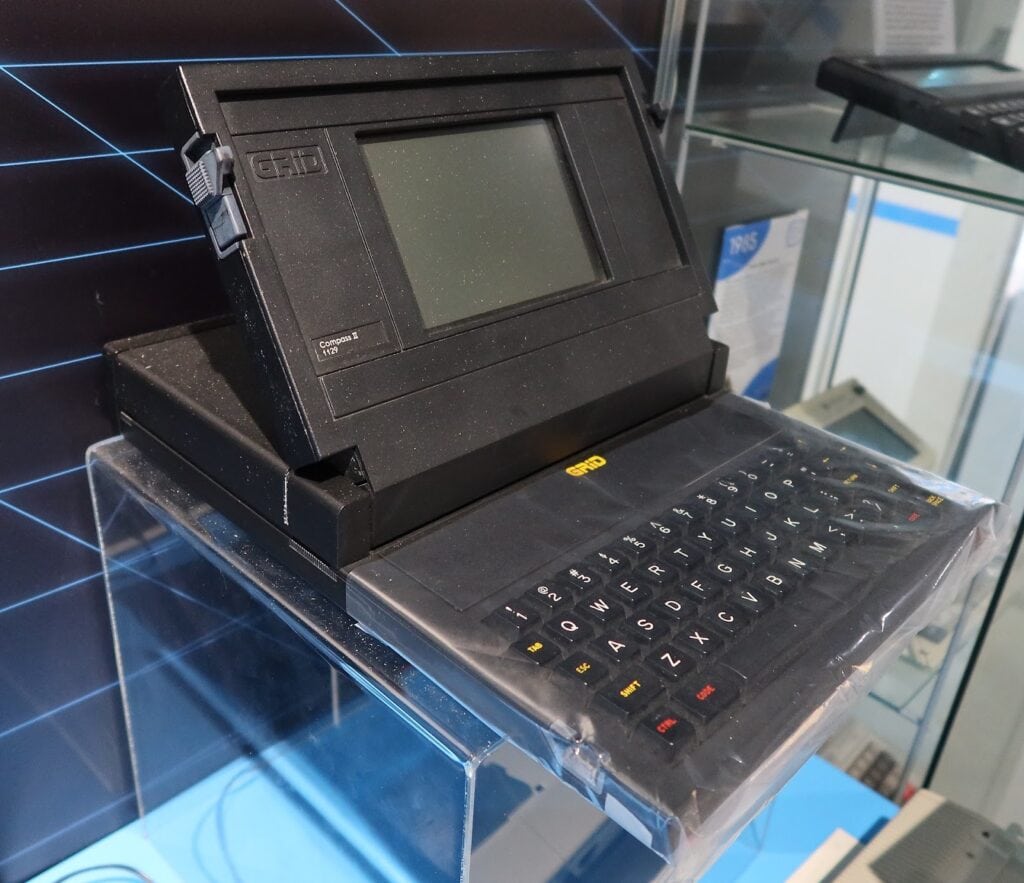
Designed by Bill Moggridge, the GRiD Compass is recognized as the first “clamshell” laptop.
The laptop was launched in 1982 and featured an 8MHz Intel 8086 CPU, 34KB of memory, and a 320×240 display. Used in NASA’s Space Shuttle program, it was not equipped with a rechargeable battery, relying on AC power.
Did you know?
Apart from NASA, the military Special Forces also invested in the Grid Compass, recognizing its potential for use by paratroopers in combat scenarios.
4. Osborne 1 (1981)
Year Established: 1981
Origin Country: United States
Processor: Zilog Z80 @ 4 MHz
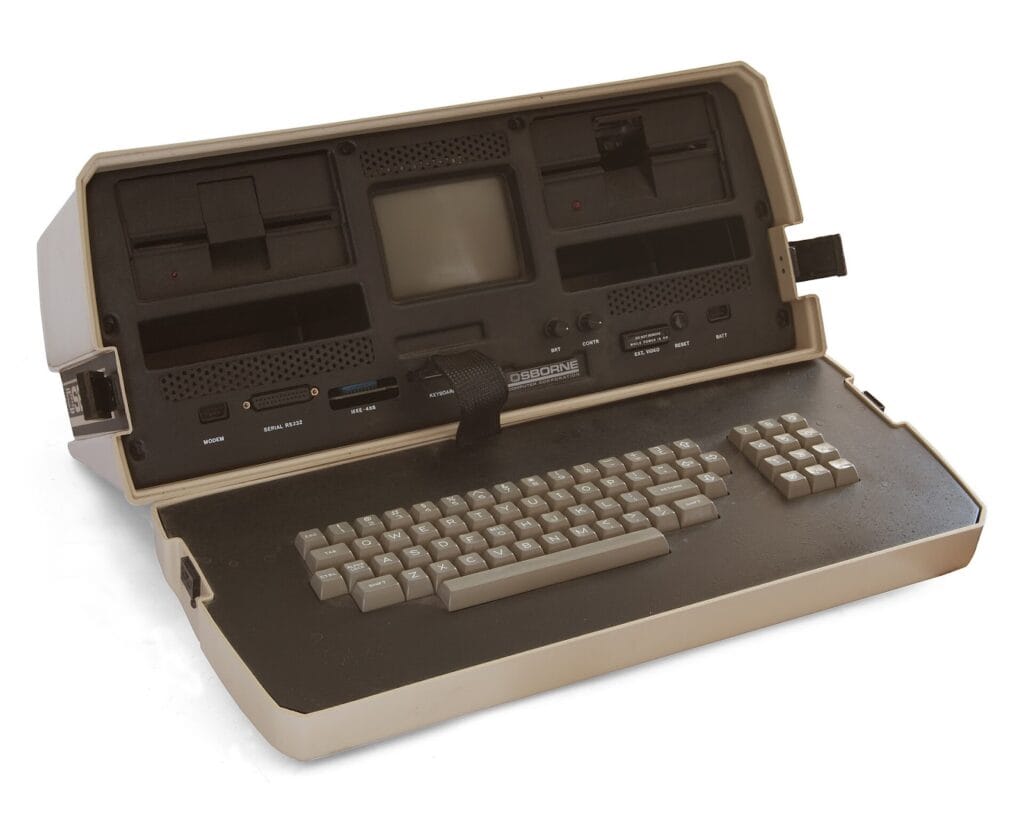
Weighing 24.5 pounds, the Osborne 1 was introduced in 1981 and was fully portable. Developed by Adam Osborne, it featured a 4MHz Zilog Z80 CPU, 64KB of RAM, and dual 5.25-inch floppy drives. It succeeded commercially, leading the way for the portable computer market.
Did you know?
The initial ten prototypes of the Osborne 1 were known as the “metal case” units and were used in the first advertisements for the computer. The cases for these prototypes were produced by Galgon Industries in California.
3. R2E CCMC Portal (1980)
Year Established: 1980
Origin Country: France
Processor: Intel 8085 @ 2 MHz
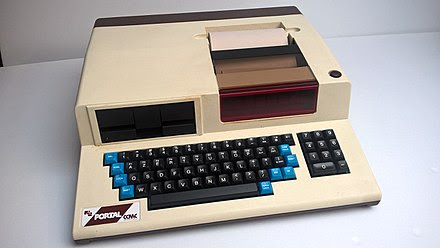
In the same year, the R2E CCMC Portal was introduced, developed by François Gernelle. The laptop showcased a 2MHz Intel 8085 CPU, 64KB of RAM, and a thermal printer. While not fully portable, its 26.5-pound weight made it relatively easy to move.
Did you know?
As the Portal is exceedingly rare, its historical significance has led to interest from collectors and museums alike. Notably, one of R2E Micral’s other early microcomputers, the Micral N, was sold for a substantial sum to Paul G. Allen, the co-founder of Microsoft, for his Living Computer Museum + Labs in Seattle.
2. Epson HX-20 (1980)
Year Established: 1980
Origin Country: Japan
Processor: Two Hitachi 6301 CPUs at 614 kHz
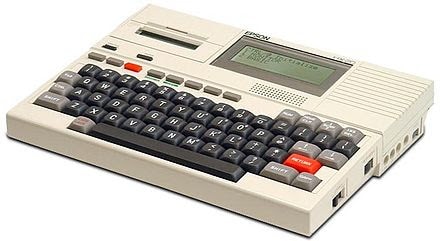
Considered the first true laptop by many, the Epson HX-20 was released in 1980. With a “cyberdeck” design, it had two Hitachi 6301 CPUs, up to 32KB RAM, and up to 64KB ROM. Weighing just 3.5 pounds and powered by rechargeable batteries, the HX-20 offered up to 50 hours of uptime, revolutionizing portability.
Did you know?
Despite its innovative design, the HX-20 faced some challenges in the market. BYTE magazine’s review noted that it had been unsuccessful in part due to the lack of software and accessories.
1. IBM 5100 (1975)
Year Established: 1975
Origin Country: United States
Processor: IBM PALM processor clocked at 1.9 MHz
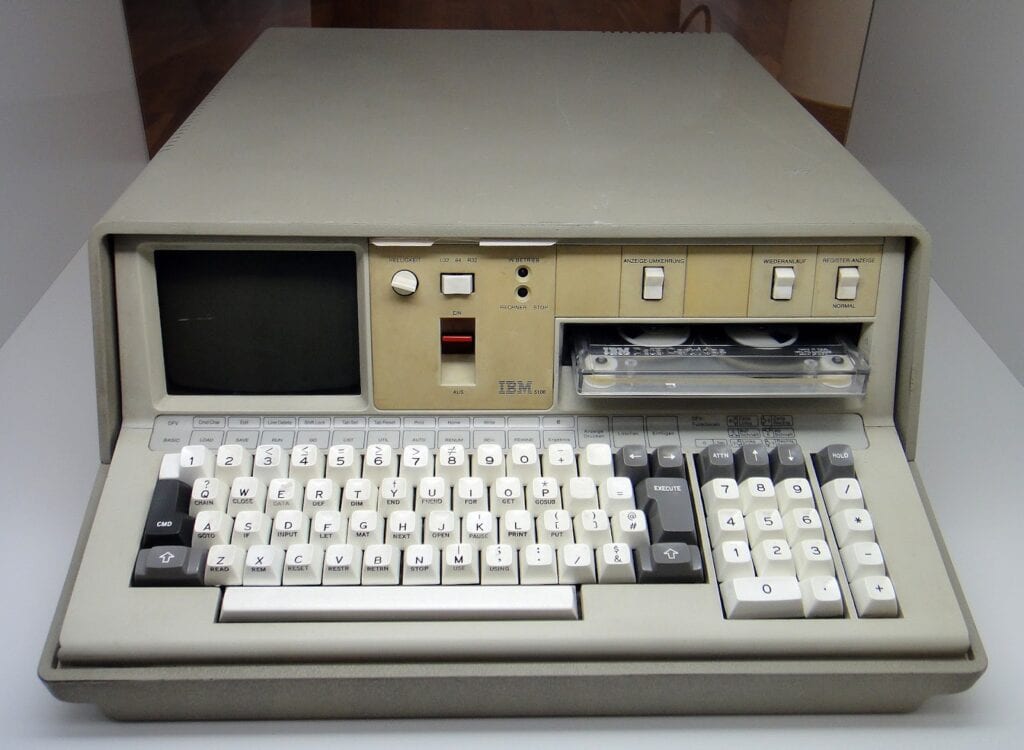
The IBM 5100 is widely regarded as the first and oldest portable computer ever created. It is considered the oldest laptop in the world. Released in 1975, it weighed a hefty 55 pounds, making it far from today’s concept of a laptop. However, it was a breakthrough at the time, combining a screen, keyboard, and processing unit in a single unit. With its IBM PALM processor and up to 16KB of RAM, it was portable, though not battery-powered.
Did you know?
The IBM 5100 was quite expensive during its time, with prices ranging from $8,975 to $19,975. In today’s dollars, it would be worth around $49,000 to $109,000 when adjusted for inflation.
Conclusion
From the bulky but revolutionary IBM 5100 to the groundbreaking TRS-80 Model 100, these early laptops set the stage for the lightweight and powerful laptops we use today. As technology evolved, laptops became more compact, powerful, and affordable, changing the way we work, communicate, and access information.
The journey from the IBM 5100 to today’s laptops has been a fascinating one and continues to shape our digital lives in countless ways.


